Australia So Much to See


Spring
Bridgetown, South West Region, Western Australia and through the coastal strip between Perth and Albany.
Hakea francisiana, Pink Pokers, Grass Leaved Hakea, Cork Tree, Emu Tree, Bottlebrush Hakea, Pink Spike Hakea
Pink bottlebush-like
flower spike with lighter coloured bristles, on a tall shrub with elongated striated leaves. Paler orange flowers may be at
an early stage of flowering or a variation.
August September







Hakea cygnus subsp. cygnus, (previously cygna, spelling correction 2019)) Swan Fruit Hakea, Swan Hakea.
Small cream flowers
on a one to two metre high shrub. Long leaves with lines a longitudinal centre line one side, and the lines the other side. These have a yellow tip terminating with a reddish colour then a spike. Seed cones are plumply rounded with a short finely
pointed horn (or beak).
August
Tarin Rock Nature Reserve and Moorine Rock, Wheatbelt Region, and found through the Mid West, Wheatbelt, Great Southern Regions and into the coastal Goldfields to Esperance.
Small butterfly Zizina labradus on shrub in photo above right.
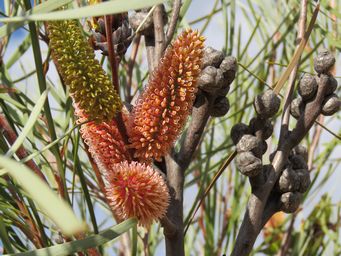
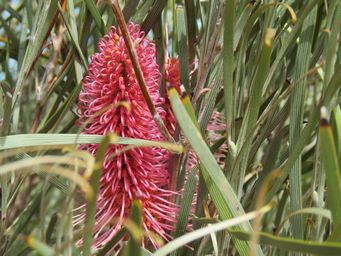
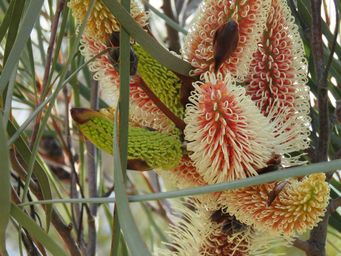
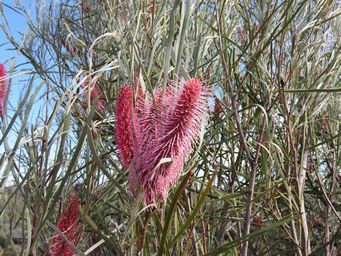
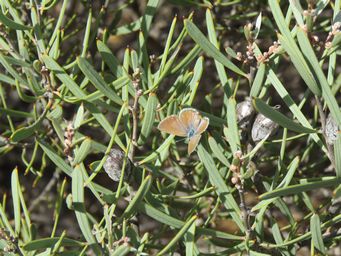
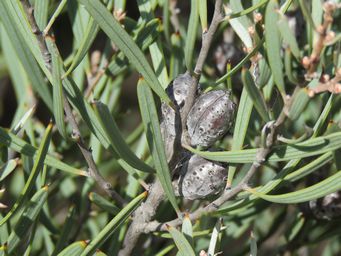
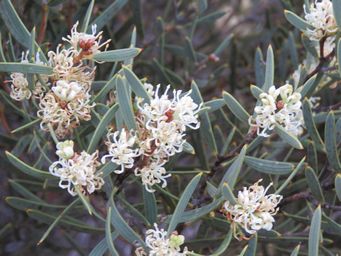
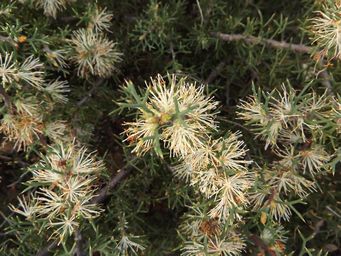
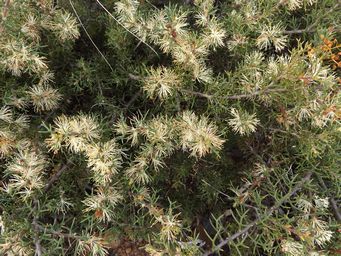
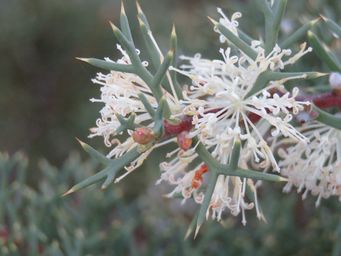
Hakea horrida (named formally in 1990)
Cream flowers up the stems of a dense shrub which grows up to two metres. Foliage is bipinnate
and not always symmetrical, stiff and has sharp spines. Seed cones are rounded with two horns (or beaks).
August September
Seen
at Tarin Rock (August), Dumbleyung shire, Wheatbelt region, and Gnowangerup shire, Great Southern region, Western Australia. Found in the Wheatbelt and Great Southern between Kondinin and Ongerup and eastwards into the Goldfields to Ninety Mile tank and Ravensthorpe.
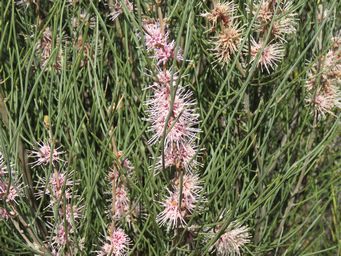
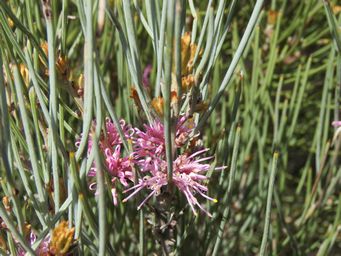
Hakea invaginata, Pink Plumed Hakea
Pink flowers up the stems on a dense shrub up to three metres tall. Leaves are fine
and long, with five longitudinal grooves. The species name invaginata means 'within a sheath', referring to the grooves of the
young leaf. Small cones are egg shaped, tapering at the top to form a beak (or horn) which then tapers to a fine point.
August
Latham, Mid West region, Western Australia, and found from Northampton to Kellerberrin, and east to Bodallin, Wheatbelt region.